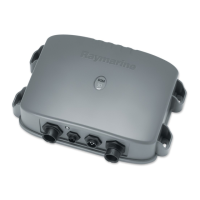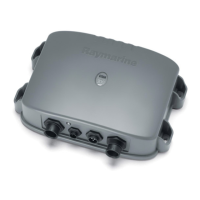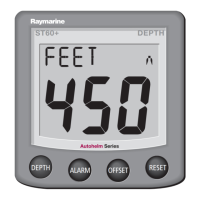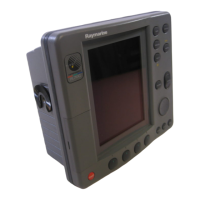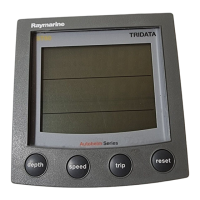4-8 DSM250 Digital Sounder Module
This setting does not affect the default soft key labels, which are
controlled by the Soft Keys option (see above).
Units
You can set the units for speed, depth, and temperature. The units
you set will be used to display all data, including information
received from other instruments on the system. However, the dis-
tance units do not affect the instrumented range of the radar,
which is always in nautical miles.
Note: The ‘Units’ values set here are also used in the other display
modes.
Variation Source
The variation value is the difference between True and Magnetic
direction data for heading or bearing values. The Variation Source
option provides soft keys for selecting Auto or Manual variation
mode, displays the current variation value for each and highlights
the currently selected mode.
Auto Mode
If you select Auto mode, the unit obtains the value of variation
automatically, normally from received data. The variation value
that is used depends on the data available and is selected in the
following order of priority:
1. Variation value from the same source as the heading data:
• If heading data is being taken from NMEA, then variation is
also taken from NMEA
• If heading is taken from SeaTalk, then SeaTalk variation is
used
2. Variation value from a different source:
• If heading data is being taken from NMEA, but no NMEA
variation is available, then variation is taken from SeaTalk
• If heading is taken from SeaTalk, but no SeaTalk variation is
available, then variation is taken from NMEA
3. A calculated variation value, using position data, if no SeaTalk or
NMEA value is available
4. The current manual variation value, if no SeaTalk or NMEA
value and no position data is available
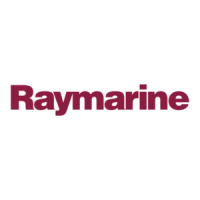
